Social media posts reek of fake paradise. When asked, “how are you?” we respond, “fine” or “good.” We mask our hurts, hide our pain, and try to bury our fears and discomfort because we think being real exposes our weaknesses. We often feel we don’t live up to what others expect, that our walk with Jesus is something less than desired, or we aren’t filled with the joy of the Lord because our reality isn’t perfectly sunny.

For years Ann White, founder of Courage for Life (CFL), walked this road every day.
“As a child I learned to turn a blind eye and pretend everything in life was perfect, even when it was far from it. I grew up learning not to rock the boat, and I carried that dysfunctional coping mechanism into all of my adult relationships, particularly into my marriage. Finding courage to change these bad habits took me a long time,” said Ann.
 For 20 years she would take her Bible to church and bring it back, rarely opening it. Her idea of being a Christian was going to church and trying to be good. The word discipleship was just about Jesus’ first followers and had no meaning for her. But when she hit rock bottom and the fake contentment was shattered, God opened her eyes to how broken she was. In desperation she cried out, not for a soother but a Savior. (for more on Ann’s personal story you can read her book Courage for Life.
For 20 years she would take her Bible to church and bring it back, rarely opening it. Her idea of being a Christian was going to church and trying to be good. The word discipleship was just about Jesus’ first followers and had no meaning for her. But when she hit rock bottom and the fake contentment was shattered, God opened her eyes to how broken she was. In desperation she cried out, not for a soother but a Savior. (for more on Ann’s personal story you can read her book Courage for Life.
“We try to fix everything ourselves, but I knew I couldn’t fix this. I needed total guidance from God. His Word brought me to a point where I could truly be strong and courageous—the end of my old self and beginning of my new self in him. I could finally say, ‘I’m messed up and that’s okay,’” said Ann.
She started getting into God’s Word every day. She was starving and thirsting for it. Her own strength was barely holding life together, but the foundation of God’s Word kept her from falling into despair. With God’s help and wisdom her husband came alongside, and together they faced the realities that were hiding behind their painted-on smiles and the façade they had created.
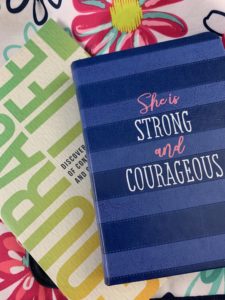 “When God saves your life, and your 26-year marriage, you want tell everyone about it. The Lord told me to birth a ministry, to reach out to women so they, too, could find their grounding and courage in God’s Word,” said Ann.
“When God saves your life, and your 26-year marriage, you want tell everyone about it. The Lord told me to birth a ministry, to reach out to women so they, too, could find their grounding and courage in God’s Word,” said Ann.
Ann obeyed God’s call, birthed CFL and started creating resources for women. She initially thought they would be taught in churches, but as she continued to follow God’s leading, the ministry grew. Around the world, CFL resources are helping women find their identity in Christ. From church groups to brothels and prisons, women are moving from fear to faith and through Christ are able to make courageous choices that bring change into their own lives and the lives of those around them.
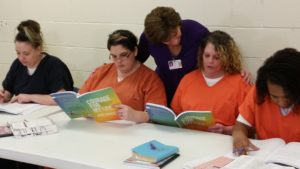 “God is working miracles. Kathy Urbanick, our ministry director for CFL, was working with women in a local prison. She said to me, ‘I am blown away. These girls are leaning into the Lord, they are inspired to make courageous changes.’ So, we decided to make an 8-week study guide with women’s prison ministry in mind. It helps women find a life full of confidence, hope, and opportunity through studying God’s Word. And there is no better translation to study that speaks right to the heart than the New Living Translation (NLT),” said Ann.
“God is working miracles. Kathy Urbanick, our ministry director for CFL, was working with women in a local prison. She said to me, ‘I am blown away. These girls are leaning into the Lord, they are inspired to make courageous changes.’ So, we decided to make an 8-week study guide with women’s prison ministry in mind. It helps women find a life full of confidence, hope, and opportunity through studying God’s Word. And there is no better translation to study that speaks right to the heart than the New Living Translation (NLT),” said Ann.
“When we first thought about providing an audio Bible, we knew it would need to be in a woman’s voice. Since abuse and trauma are common occurrences in at-risk women’s lives, a man’s voice can cause them to relive horrific memories from their past by reminding them of their abusers. We knew we needed an audio Bible that would be like a mother, grandmother, or sister reading to you. We didn’t want anything to distract from the comfort and peace God’s Word brings,” said Ann.
In searching for this resource, they discovered that very few exist. Ann again heard God calling her out of her comfort zone to start a new project. Twelve women from different ethnicities, ages, and backgrounds came together to voice the first-ever all-women-narrated Bible app.
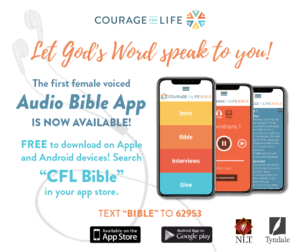 “As we were finishing this project we started talking to the prisons about it, and God confirmed that ‘for such a time as this’ the app was needed. Many of our state’s prisons have started giving women tablets filled with positive content. What better positive message is there than the Word of God?” said Ann.
“As we were finishing this project we started talking to the prisons about it, and God confirmed that ‘for such a time as this’ the app was needed. Many of our state’s prisons have started giving women tablets filled with positive content. What better positive message is there than the Word of God?” said Ann.
But it wasn’t for the women alone. The prisons asked if they could upload it to the men’s tablets as well. With many children raised by a single mom, grandma, or aunt, men who have had negative experiences with their fathers and other men also respond better to women’s voices. It’s a vital reminder of someone in their lives who spoke encouragement and love. Two states are currently in the process of uploading the women’s NLT audio Bible—to 53,000 tablets in one state and over 30,000 in another. And the numbers continue to grow.
“When God called me, I never thought I would be working in jails or creating an audio Bible, but God’s passion is for everyone to be drawn to him, and this my passion too. My greatest prayer is that everyone will get into God’s Word. According to extensive research by Back to the Bible, if we are reading God’s Word four or more times a week, it changes our patterns, our behavior, our attitudes; it will change a culture,” said Ann.
Many at-risk women relive their mistakes over and over, judging themselves and drifting into despair. Even while in the dark night of the soul, Kathy has seen miraculous transformation when women read the NLT. The negative self-talk is replaced with God’s words of love and hope.
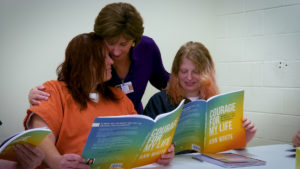 “Many of these women have been told and are treated as though they are less than nothing. They feel they are worthless and that there is no hope. The beautiful thing about the NLT is that it is uses gender-inclusive language. Women can see themselves right in the text, learn to believe God loves them in a very personal way,” said Kathy. “As they read it they can see women in Christ’s lineage, that Christ and Paul had encouraging and positive relationships with women. If they read it and hear it in a way they can understand, they can replace the lies the world has told them with the truth of Scripture.”
“Many of these women have been told and are treated as though they are less than nothing. They feel they are worthless and that there is no hope. The beautiful thing about the NLT is that it is uses gender-inclusive language. Women can see themselves right in the text, learn to believe God loves them in a very personal way,” said Kathy. “As they read it they can see women in Christ’s lineage, that Christ and Paul had encouraging and positive relationships with women. If they read it and hear it in a way they can understand, they can replace the lies the world has told them with the truth of Scripture.”
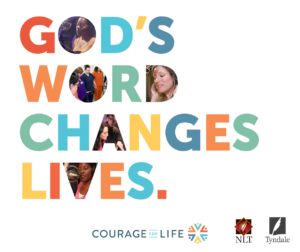 Learn more about Courage for Life and the first Audio Bible app fully voiced by women.
Learn more about Courage for Life and the first Audio Bible app fully voiced by women.


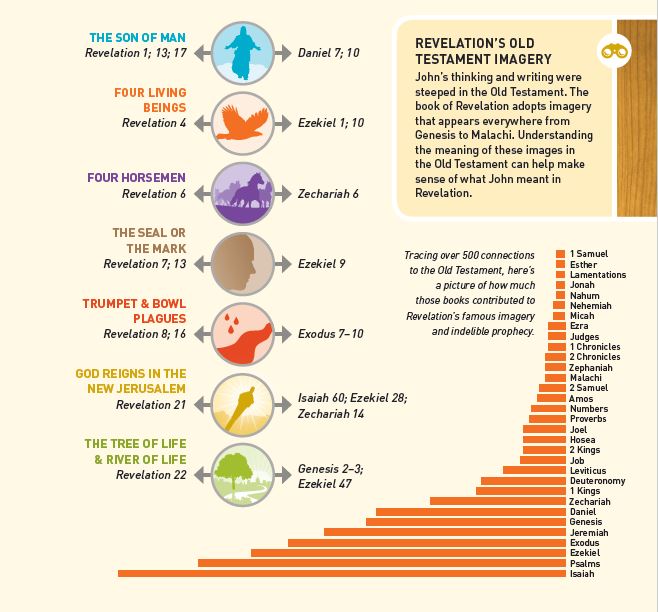











 For 20 years she would take her Bible to church and bring it back, rarely opening it. Her idea of being a Christian was going to church and trying to be good. The word discipleship was just about Jesus’ first followers and had no meaning for her. But when she hit rock bottom and the fake contentment was shattered, God opened her eyes to how broken she was. In desperation she cried out, not for a soother but a Savior. (for more on Ann’s personal story you can read her book
For 20 years she would take her Bible to church and bring it back, rarely opening it. Her idea of being a Christian was going to church and trying to be good. The word discipleship was just about Jesus’ first followers and had no meaning for her. But when she hit rock bottom and the fake contentment was shattered, God opened her eyes to how broken she was. In desperation she cried out, not for a soother but a Savior. (for more on Ann’s personal story you can read her book “When God saves your life, and your 26-year marriage, you want tell everyone about it. The Lord told me to birth a ministry, to reach out to women so they, too, could find their grounding and courage in God’s Word,” said Ann.
“When God saves your life, and your 26-year marriage, you want tell everyone about it. The Lord told me to birth a ministry, to reach out to women so they, too, could find their grounding and courage in God’s Word,” said Ann. “God is working miracles. Kathy Urbanick, our ministry director for
“God is working miracles. Kathy Urbanick, our ministry director for 
 “Many of these women have been told and are treated as though they are less than nothing. They feel they are worthless and that there is no hope. The beautiful thing about the NLT is that it is uses gender-inclusive language. Women can see themselves right in the text, learn to believe God loves them in a very personal way,” said Kathy. “As they read it they can see women in Christ’s lineage, that Christ and Paul had encouraging and positive relationships with women. If they read it and hear it in a way they can understand, they can replace the lies the world has told them with the truth of Scripture.”
“Many of these women have been told and are treated as though they are less than nothing. They feel they are worthless and that there is no hope. The beautiful thing about the NLT is that it is uses gender-inclusive language. Women can see themselves right in the text, learn to believe God loves them in a very personal way,” said Kathy. “As they read it they can see women in Christ’s lineage, that Christ and Paul had encouraging and positive relationships with women. If they read it and hear it in a way they can understand, they can replace the lies the world has told them with the truth of Scripture.” Learn more about Courage for Life and the first Audio Bible app fully voiced by women
Learn more about Courage for Life and the first Audio Bible app fully voiced by women



Recent Comments